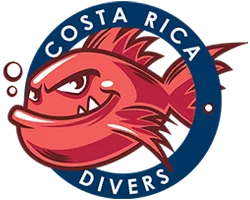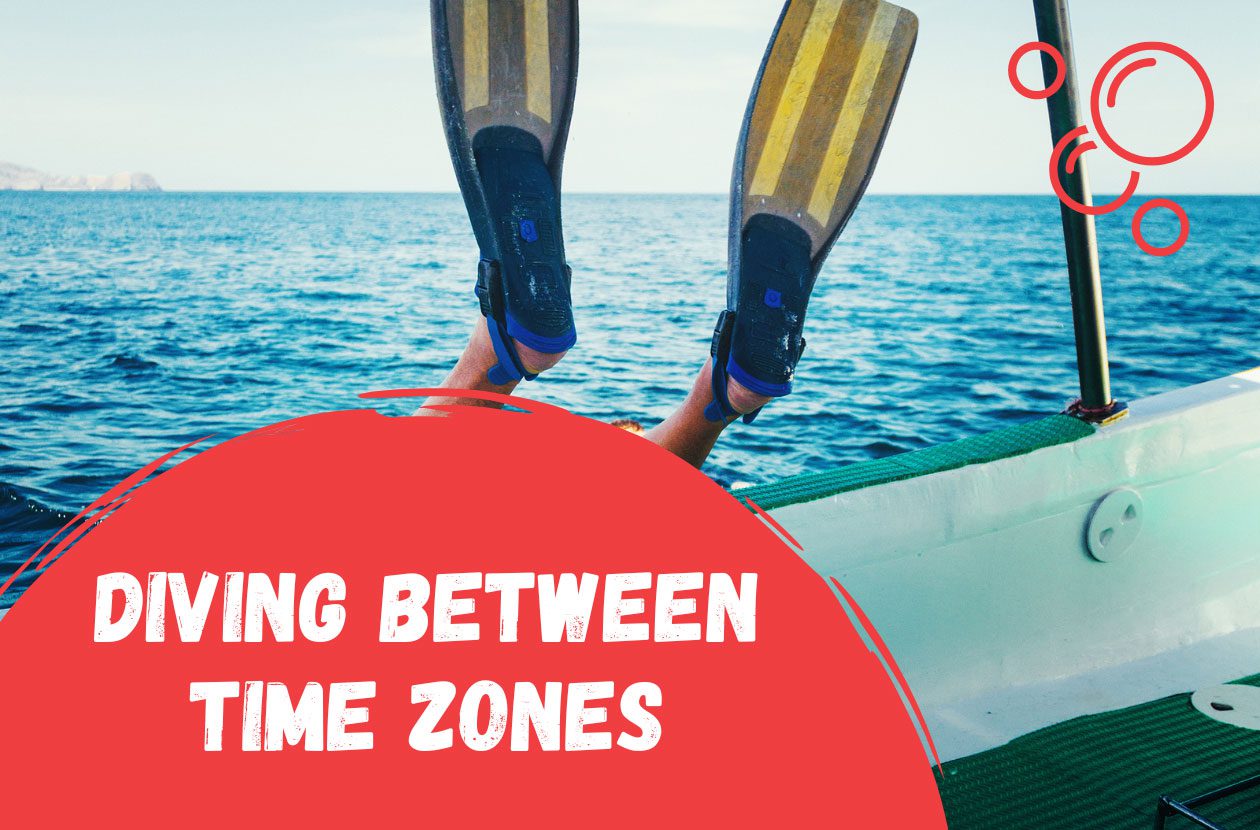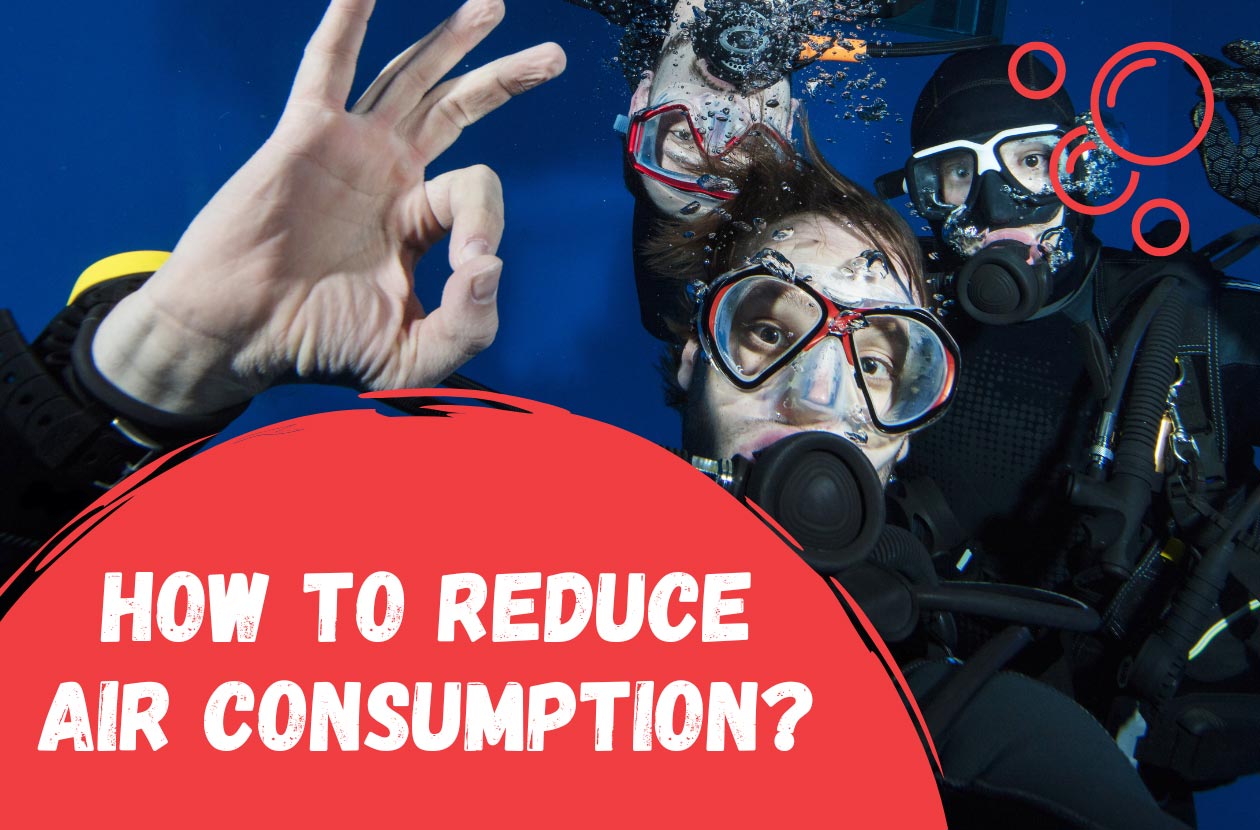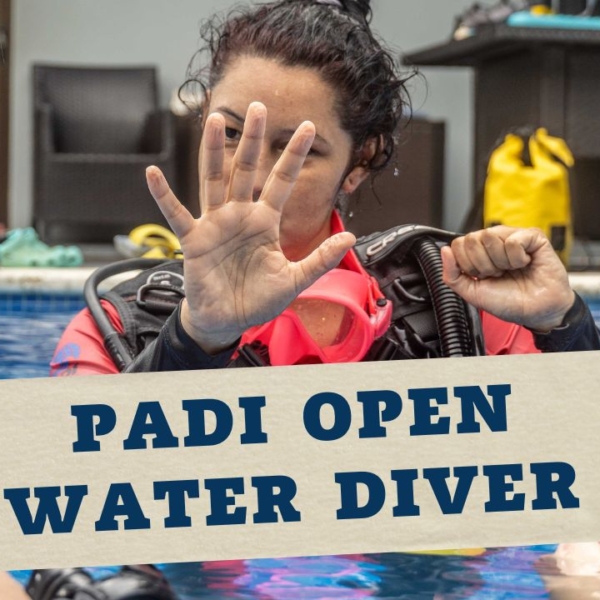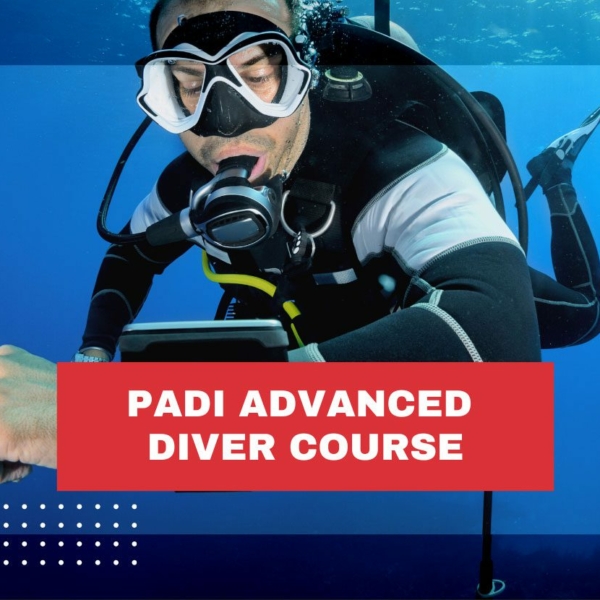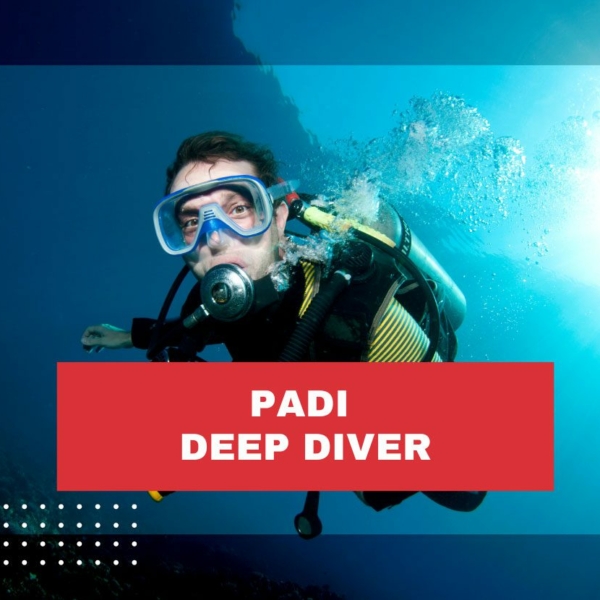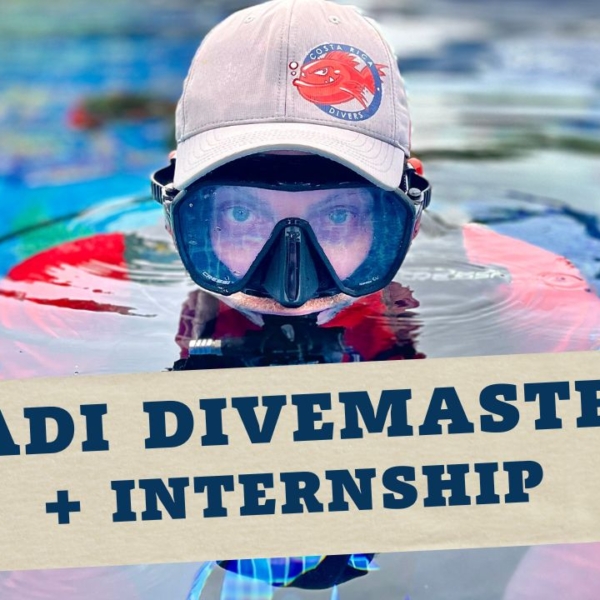From the first part of our study of scuba diving, you learned the basics about what scuba diving really is and its varieties. You already know that diving can be a recreational activity, but it can also be a serious sporting challenge and even a professional activity.
In the next part we will talk about the equipment used for diving, its types and use. You will learn all about diving regulators, masks, or fins. Let’s get started!
Table of Contents
Diving equipment
Diving equipment is a very wide category, with new products appearing regularly. And in the most general terms, diving equipment can be divided into ABC equipment and other diving equipment/air equipment (i.e. more or less extensive and advanced divers’ equipment) and additional accessories/auxiliary equipment. What are types of diving equipment? Let’s find out form this part of scuba diving guide.
ABC equipment: mask, fins, snorkel
ABC equipment is a mask, fins and snorkel, which make snorkeling possible, it is the only equipment for freedivers and basic equipment for scubadivers (but insufficient for diving by this method). Because this equipment is individual equipment, that means that each diver, even a beginner, should have his own set (at some dive centers it is possible to rent ABC equipment).
Diving mask
An essential piece of equipment for a diver, enabling proper and comfortable vision underwater by creating air space in front of the eyes.
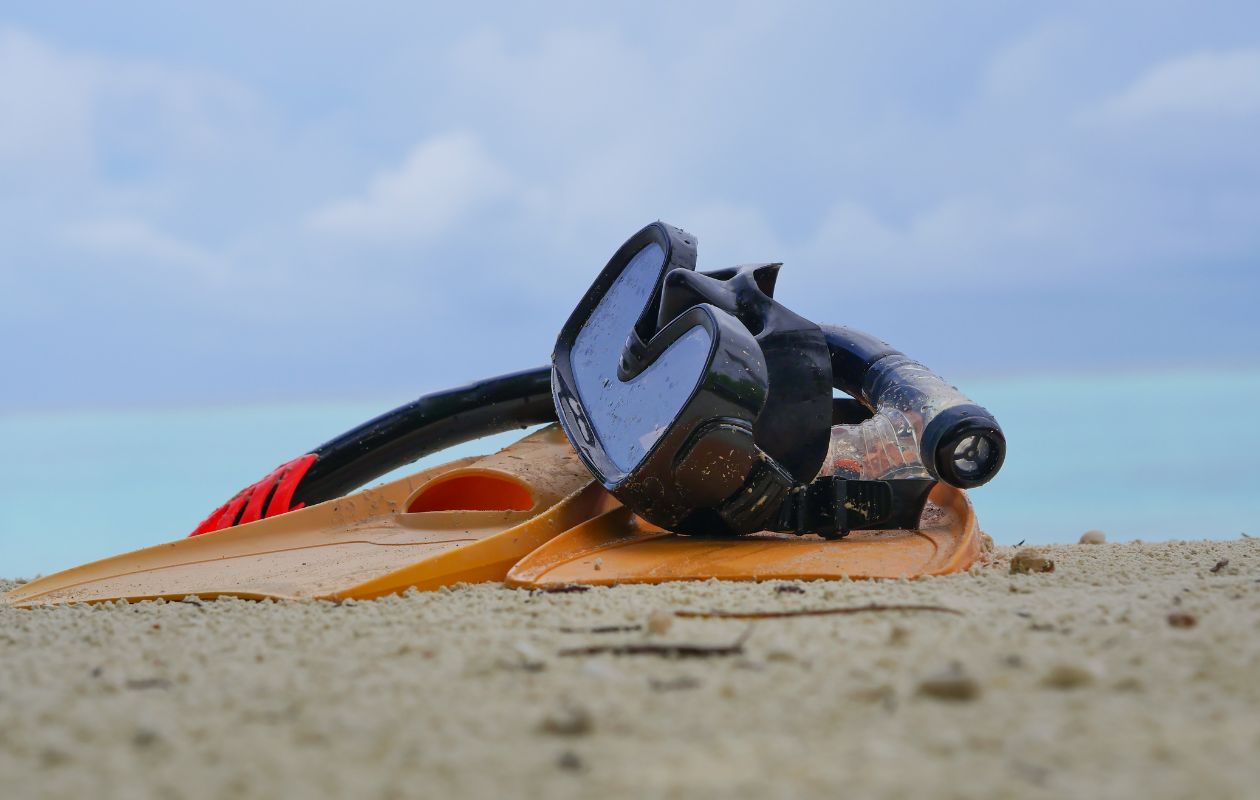
Basically properly fitted mask protects the eyes and nose from contact with water and allows to equalize pressure (through the nose). So diving mask includes the following components:
- Frame/base – the frame is made of plastic, various types/shapes of bases are available, so you can optimally fit the mask to the shape and size of your face;
- Sealing collar – modern masks’ collars are made of silicone (usually transparent, white/milky or black), the collar has a minimum of double sealing on the edge and covers the entire body, except for the section below the soft nose (so that it is possible to effectively drain water during diving, the so-called “blowout” of the mask);
- Tempered glass – tempered glass guarantees maximum safety, making it practically impossible to break the mask (however, if the glass was broken – it would break into small pieces with blurry edges), the most common diving masks have one or two glasses, in more advanced models, allowing panoramic vision underwater – there may be more glasses (for example, three or six);
- Soft nose (covers the nose) – a part of the base that covers the nose, made of soft and flexible plastic (this design allows you to compress the nose and equalize the pressure in the mask and “blow” the mask);
- Strap with adjustment system – the straps of modern diving masks are made of silicone (usually identical to that used in the collar) additionally they have a split in the middle (to minimize pressure on the head and the risk of displacement of the strap/mask), the task of the strap is to pre-press the mask to the diver’s face.
Snorkel
A snorkel allows you to breathe air without emerging from the water. As a result it is a part of the equipment that makes snorkeling possible, and is rarely, very rarely or not at all useful in other diving techniques. The snorkel can be used, for example, when swimming to a designated dive site or when returning from a dive, especially when there is a long distance to be traveled in difficult surface conditions (e.g. at sea, with high waves or strong currents). The snorkel consists of the following components:
- Tube – modern tubes are anatomically shaped (fit the shape/outline of the head, without sharp curves and constrictions that make it difficult to take in and exhale air), consequently the diameter of the tube should be about 2 cm, and the length of the tube about 30-35 cm;
- Mouthpiece – made of silicone, it should have a size and shape that allows you easily place it in your mouth and hold it comfortably with your teeth (in classic models: with two tabs, in modern mouthpieces the tabs are connected by an additional, properly shaped element);
- Check valve (optional) – is located below the mouthpiece and makes it easier to empty the pipe of water;
- Labyrinth valve (optional) – located at the end of the tube and restricting water from pouring into the pipe;
- The clasp – an external and movable element, applied to the tube allows you to connect the snorkel to the strap of the mask in such a way that it can be comfortably inserted into the mouth.
Diving fins
The purpose of the fins is to increase the surface area of the feet, basically maximizing our mobility in the water. Fins allow you to swim quickly and efficiently using only your feet. The construction of fins is relatively simple – each fin consists of: a foot pocket (calcaneus or strap) and a fin blade (which is the driving force of the fin, bladess can be of different size/length and hardness, different shape and functionality).
Fins should not only fit the foot, but also be matched to the diver’s skills and condition. Strap fins are used for diving:
- Classic – consist of a blade and a foot pocket, available in different levels of softness/hardness,
- With a splitting – consist of a blade with a split, are very soft and easy to use even for beginners,
- Technical jet fins (short and hard strap fins, mainly used in technical diving, requiring excellent skills and strong legs).
Breathing equipment
Air equipment is equipment that allows you to stay underwater for extended periods of time. It consists of three components: a cylinder or set of cylinders, a breathing regulator and a buoyancy system (BCD or wings).
Diving cylinder / diving cylinder set
Diving cylinders are cylindrical tanks of a certain capacity (mostly: 10l, 12l, 15l, 18l). Used to store/hold the 150-300at (15-30MPa) high pressure gas that we will use underwater. Cylinders can be made of carbon steel (used mainly in cold and fresh water) or alloy steel and aluminum alloys (used mainly in warm and salt water). Aluminum cylinders are larger and heavier than steel cylinders of the same capacity. But in water they become lighter than steel cylinders – they have neutral buoyancy (positive or slightly negative). Steel cylinders have negative buoyancy, so they can reduce the load in the diver’s ballast system.
A steel diving cylinder consists of the following components:
- Cylinder – steel (with a curved bottom) or aluminum (with a flat bottom). Available in different capacities (from 4l to 18l), and therefore in different sizes and weights;
- Net – performs the protective function of the cylinder, protecting it from mechanical damage. Made of special threads, tightly fitted to the dimensions of a particular cylinder;
- Valve – allows you to control the gas flow from the cylinder;
- Handle – allows you to carry the cylinder comfortably and safely;
- Foot – an element made of plastic, also called a pot. Fitted on the lower, convex part of the cylinder and allowing it to stand on the ground. The flat bottom of aluminum cylinders does not require additional feet.
An aluminum diving cylinder usually consists of only two components: the cylinder and the valve.
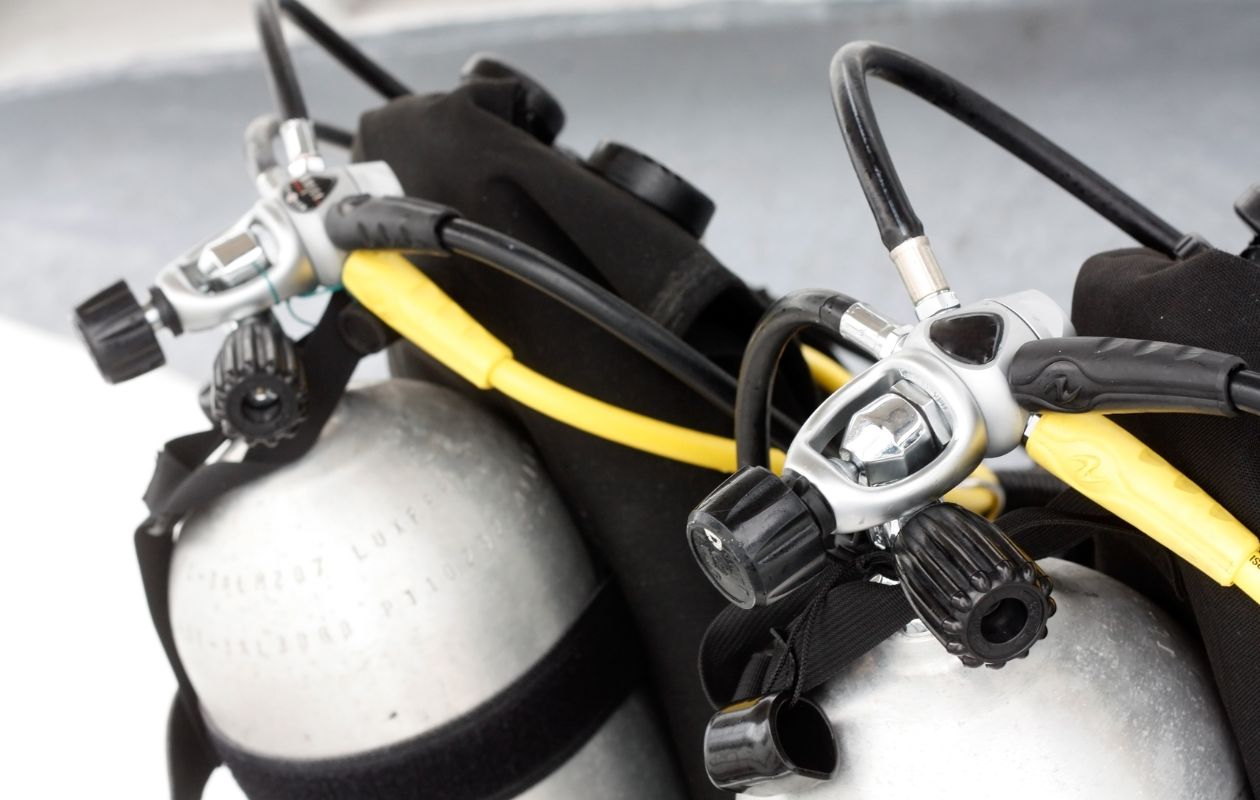
Two diving cylinders, connected to each other by a special construction/handle, is a Twinset. Twinsets are used mainly by technical divers, but also for cave or wreck diving.
Breathing regulator
This is one of the most important pieces of diving equipment, essential for our safety. It is absolutely necessary for a diver to know how the breathing regulator works, to be able to connect it intuitively and correctly to the cylinder, and to operate it confidently also in emergency situations. The chosen breathing regulator should be properly stored and regularly maintained.
A breathing regulator consists of the following components:
- The first stage of the breathing regulator (membrane or piston, with DIN or INT type connection) – screwed to the diving cylinder, reduces the high pressure from the cylinder to a overpressure of about 10at;
- The second stage of the breathing regulator (may additionally have breathing resistance adjustments) – is located directly at the mouth, reduces the positive pressure from about 10at to ambient pressure;
- Octopus, or alternative air source – currently absolutely required;
- Pressure gauge – a device that allows you to control the supply of air/gas in the cylinder (optionally, the pressure gauge can be part of the console, that is, a device that has more indicators, such as in addition: compass, depth gauge, dive computer);
- Inflator and inflator hose – allowing to fill and empty the system/buoyancy bag.
Buoyancy system
A diver’s buoyancy system is nothing more than a BCD (Buoyancy Control Device) buoyancy compensation vest. This vest is a must-have item of equipment for every diver. It increasing his safety and making diving experience more comfortable.
The task of the BCD is to:
- Allowing the diver to change buoyancy ( depending on the actual need to negative, positive or neutral buoyancy),
- Allowing the diver to quickly surface the water in emergency situations,
- Allowing the diver to stay safely on the surface of the water. Preferably in the so-called safe position, i.e. face up.
BCD vests are available in a wide range of designs. So every diver can choose a model that will be optimally suited to his or her size, needs and skills.
Types of BCD:
- Jacket-type BCD – the most popular and commonly used type of vest, easy to use. Jacket can be: adjustable (with the ability to adjust the length of the arms to your body and current needs, such as for diving in a wetsuit or dry suit) or full (with full arms, without the ability to adjust – it is necessary to carefully select the size of the BCD);
- Wing-type BCD – a type of jacket attached to the back (filling the buoyancy bag does not squeeze the diver at the waist, as is in the classic Jacket-type BCD), which was originally used by technical divers, and is now entering widespread use in recreational diving.
Assistive equipment – additional diving equipment and accessories
This is a wide range of different types of equipment and accessories that are designed to make diving easier and improve the diver’s comfort and optimize his safety underwater.
Auxiliary equipment includes, among others:
- Ballasts (including belt ballasts and leg ballasts)
- Diving consoles and dive computers
- Individual gauges to expand your individual measurement system, including: dive watches, thermometers, depth gauges, compasses, gauges / meters
- Light accessories – flashlights, LED flashlights, HID flashlights, flashes and chemical light
- Sounders
- Diving tabs – allowing you to write down and read information/messages to your partner underwater
- Knives, net knives and secateurs, as well as multifunctional toolkits
- Ice screws and augers
- Underwater scooters – amateur and professional
- Dive bags and transport cases – to facilitate safe transportation / carrying of diving equipment.
Diving guide – How to start diving?
Scuba diving is a very nice form of physical activity that is relatively easy in its recreational form. Where and how to start diving? Those wishing to start diving should begin by acquiring a basic knowledge of the physics and technique of diving. As well as mastering the most important skills (including those related to breath holding and breathing with a breathing regulators, related to the operation of equipment and aqualung).
Diving lessons should always take place under the guidance of an experienced, active diving instructor. Preferably in strictly controlled and maximally safe conditions – in special pools or modern diving simulators.
Theoretically, the diving can only be performed by trained, certified divers. In practice, however, thanks to modern schools and organizations, almost any person who is interested in diving (meeting the necessary conditions and having no contraindications) – can try and see if diving is for them.
First dive – try diving
Most of good diving centers provides Try Scuba and Try Freediving services. This is an option for people who have never dived before and want to try it without any commitment.
- Discover Freediving – is an opportunity to make your first dive on held breath, under the guidance of a qualified and experienced instructor,
- Discover Scuba Diving – this is an opportunity to catch your first breath underwater. Good dive centers provide the opportunity to use modern, complete diving equipment and professional care from a qualified and experienced instructor.
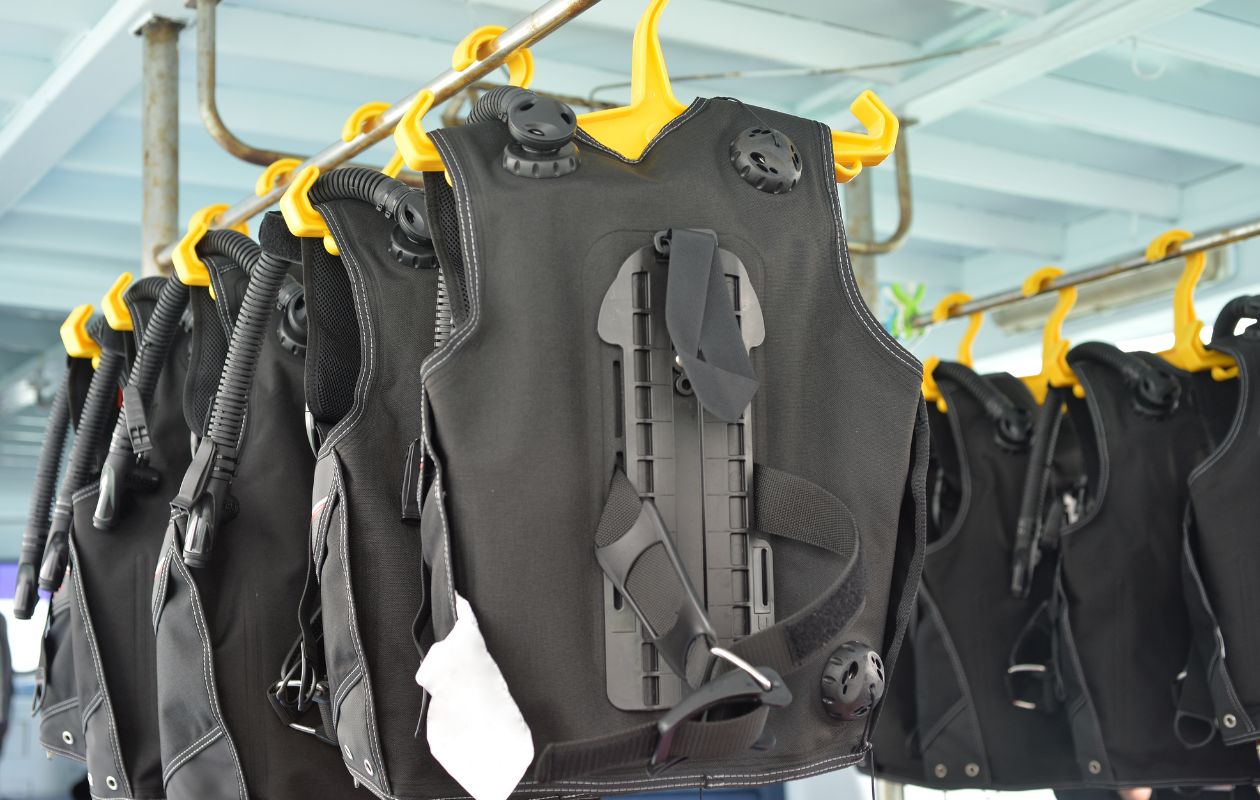
The first diving class with the chosen method lasts 90 minutes (Scuba Diving) or 120 minutes (Freediving). And takes place in the safe, maximum comfortable conditions in the pool. The water temperature is optimal and constant at all depths. Each participant of the class receives a diving certificate. If after the first dive we feel a desire for more – it’s time to enroll in a course developed by one of the training organizations/diving schools. Gaining more diving certificates and degrees is the only way to develop your skills and expand your certification. In addition, you can develop within a specific specialization, such as night diving, underwater photography or wreck diving. More about diving specialization you will find in part 3 of this scuba guide.
Who can dive?
So what are the conditions that need to be met in order to start a diving adventure?
- Appropriate age – according to the standards of diving organizations, scuba diving is intended for healthy adults (with no upper age limit), children and adolescents from the age of 8;
- Good health – recreational diving is available to all healthy people with no health contraindications (contraindications are described below). Consult a doctor before starting your diving adventure;
- Physical condition – should be at least at an intermediate level. As recreational diving is slightly more demanding than recreational swimming. Primarily due to more difficult underwater conditions and the need to use additional, relatively heavy equipment (scuba diving). Or master the technique of effective and safe breath-holding (freediving).

Diving guide – do you need to know how to swim to dive?
Scuba diving is an activity for people who feel comfortable in the water. And in the vast majority of cases – the ability to swim is the key to comfort and a guarantee of safety. Theoretically, diving is possible for people who can’t swim, while amateur snorkeling can’t be done without this skill. In practice, however, any person who thinks about developing a new passion after the first trial dive – should have the ability to swim at a minimum intermediate level.
Most diving federations that certify diving courses and levels require a person wishing to enter training – the ability to swim: 200 meters on the water surface (any style, in any time) and to swim 15 meters underwater. So the better we know how to swim, the more confident and safe we feel in the water. And thus we can experience more pleasure from diving. In parallel with developing your diving skills, it is therefore worthwhile to train swimming. Including the ABCs of swimming (mask, snorkel, fins).
Contraindications to diving
Recreational diving, performed under the supervision of experienced instructors and in compliance with all safety rules, can be practiced by healthy adults, adolescents and children from 8 years old. Under the condition that there are no contraindications for scuba diving.
Absolute or relative contraindication to start or continue the adventure of diving are:
- Lack of swimming skills and fear of water
- General unwellness (on the day of the scheduled dive)
- Being under the influence of alcohol, intoxicants, psychoactive drugs (on the day of the scheduled dive)
- Active viral or bacterial infection. Including but not limited to: cold, flu, ear infection, sinus infection, inflammation/infection of the respiratory tract
- Serious respiratory diseases, including but not limited to: asthma, emphysema, tuberculosis, COPD (chronic obstructive pulmonary disease)
- Diseases or surgeries of the ear
- Infections or other chronic sinus problems
- Heart or cardiovascular disease
- Surgeries performed within the 12 months prior to diving. So: heart, lung and spine surgeries (other surgeries and surgeries performed earlier should be consulted with your doctor)
- Diabetes
- High cholesterol
- Hypertension
- Back diseases
- Hernia / hernias
- Pregnancy
- Bleeding or blood clotting problems
- Identification of a personal or family history of medical conditions including: heart attacks, strokes, strokes or other heart disease
- Nervous system disorders, incidents of unconsciousness or syncope
- Behavioral disorders, claustrophobia, agoraphobia, epilepsy, anxiety, panic attacks.
The complete guide to scuba diving – summary of part two
As you can see, diving requires the use of specialized equipment and the knowledge of how to use it. Despite the widely available knowledge, you are unlikely to learn it from youtube…. To learn all the rules of safe diving you need to take a certified diving course. And you can read more about diving safety in the 3rd part of our study on diving.
